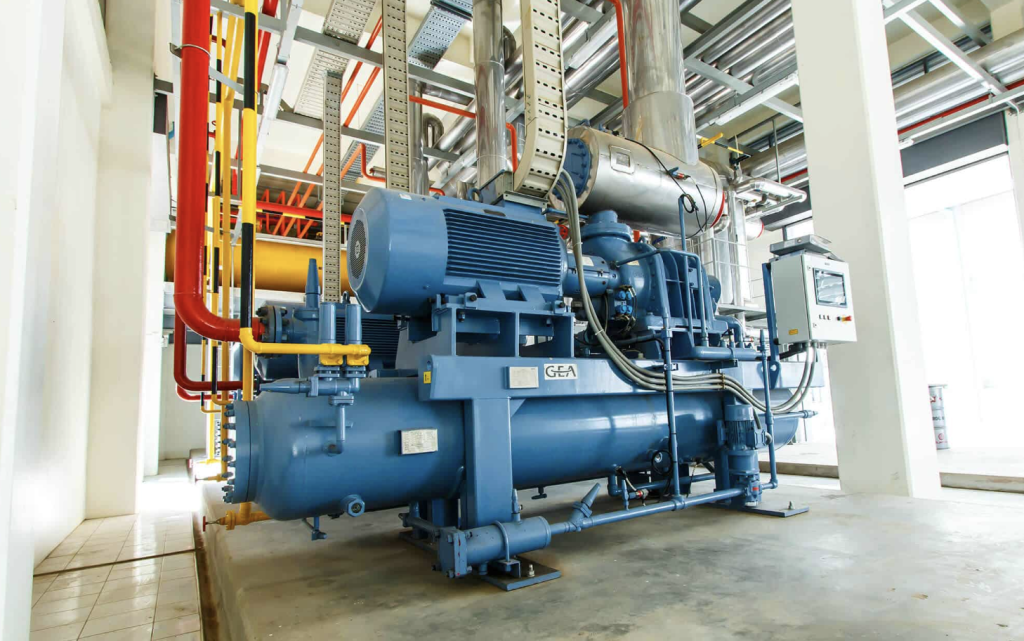HVAC tune-up is a crucial routine that ensures the reliable and efficient operation of cooling systems. Regular checks, diagnostics, and preventive measures not only help in identifying potential issues early but also extend the lifespan of the equipment. This article explores the main stages ofchiller and fan coil maintenance and provides insights into preserving air conditioning equipment.
Chiller Maintenance Stages
Key Maintenance Activities
- Inspection: Check equipment for visible faults and leaks.
- Measurement and Analysis: Monitor operating parameters.
- Electronics Check: Evaluate the electrical components.
- Filter Maintenance: Clean or replace filters if necessary.
- Fluid Control: Check and adjust the levels of technical fluids.
- Noise Inspection: Identify and resolve unusual noises.
- Model-Specific Tasks: Address issues unique to the chiller model.
Observations and results are recorded in a log, and a comparative analysis of indicators is performed to detect any deviations. Early detection of deep-seated faults can prevent significant breakdowns, saving costs and prolonging the equipment’s service life.
Special Focus: Pipeline Fittings and Pump Maintenance
Pipeline Fittings Maintenance
Pipeline fittings are critical for the proper circulation of refrigerant in the system. Regular maintenance includes:
- Inspecting taps, valves, and fittings for leaks or blockages.
- Ensuring smooth operation without jamming.
- Testing taps for pressure retention when closed and minimizing hydraulic resistance when open.
Given the high number of fittings in modern chillers, thorough and frequent inspections are essential.
Pump Maintenance
The pump station, comprising multiple pumps and control systems, demands specialized care:
- Electrical inspections.
- Pressure and flow adjustments.
- Balancing and noise level checks.
- Cleaning and rotating twin pumps to maintain balance and prevent wear.
Regular pump maintenance ensures seamless operation and prevents sudden failures.
Chiller Conservation for Winter
Why is Conservation Necessary?
Most industrial chillers operate on water, making them vulnerable to freezing in colder months. Ice formation can cause cracks and significant damage to the system. Conservation protects the equipment during winter, ensuring operational readiness in spring.
Conservation Process
- Standard Maintenance: Conduct a full maintenance routine.
- Drain and Dry: Remove water and blow out heat exchangers.
- Fill with Glycol: Add antifreeze to prevent freezing.
- Nitrogen Purge: Fill pipes with nitrogen to preserve the system.
In spring, the equipment undergoes de-conservation, where water is refilled, performance indicators are reassessed, and the system is re-serviced if needed.
Conclusion
Chillers are indispensable in industrial cooling systems due to their reliability and efficiency. However, consistent performance requires regular maintenance. While the service scope is similar across providers, costs can vary. A comprehensive maintenance package typically includes inspections, diagnostics, cleaning, and optional conservation for winter.
Trust the Experts: Collaborate with a reputable service company for peace of mind and cost savings in your production process. Have any questions? Drop them in the comments below!




